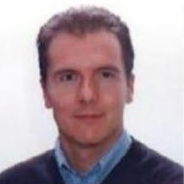Quantum Structures and Logics
A special issue of Entropy (ISSN 1099-4300). This special issue belongs to the section "Quantum Information".
Deadline for manuscript submissions: closed (31 July 2022) | Viewed by 8266
Special Issue Editors
Interests: quantum computing; quantum optics; quantum computational structures and logics
Special Issue Information
Dear Colleagues,
“Quantum Structures and Logics” is a Special Issue integrating all fields of quantum mechanics and its applications. It provides an important opportunity for researchers to disseminate their results and to obtain feedback from members of the International Quantum Structures Association. Owing to its interdisciplinary and foundational character, the objective is to encourage communication between researchers throughout the world whose research is related to:
- Quantum structures and their applications in physics, mathematics, and philosophy;
- Logico-algebraic structures, orthomodular structures, quantum logics, empirical logics, operational structures;
- Quantum mechanics;
- Quantum measurements;
- Quantum computation, quantum information, quantum communication;
- Philosophy of quantum mechanics;
- Quantum probability;
- Interdisciplinary applications of quantum structures.
Prof. Dr. Roberto Leporini
Prof. Dr. Roberto Beneduci
Guest Editors
Manuscript Submission Information
Manuscripts should be submitted online at www.mdpi.com by registering and logging in to this website. Once you are registered, click here to go to the submission form. Manuscripts can be submitted until the deadline. All submissions that pass pre-check are peer-reviewed. Accepted papers will be published continuously in the journal (as soon as accepted) and will be listed together on the special issue website. Research articles, review articles as well as short communications are invited. For planned papers, a title and short abstract (about 100 words) can be sent to the Editorial Office for announcement on this website.
Submitted manuscripts should not have been published previously, nor be under consideration for publication elsewhere (except conference proceedings papers). All manuscripts are thoroughly refereed through a single-blind peer-review process. A guide for authors and other relevant information for submission of manuscripts is available on the Instructions for Authors page. Entropy is an international peer-reviewed open access monthly journal published by MDPI.
Please visit the Instructions for Authors page before submitting a manuscript. The Article Processing Charge (APC) for publication in this open access journal is 2600 CHF (Swiss Francs). Submitted papers should be well formatted and use good English. Authors may use MDPI's English editing service prior to publication or during author revisions.
Keywords
- quantum structures
- quantum logics
- quantum mechanics
- quantum computation
- quantum information







